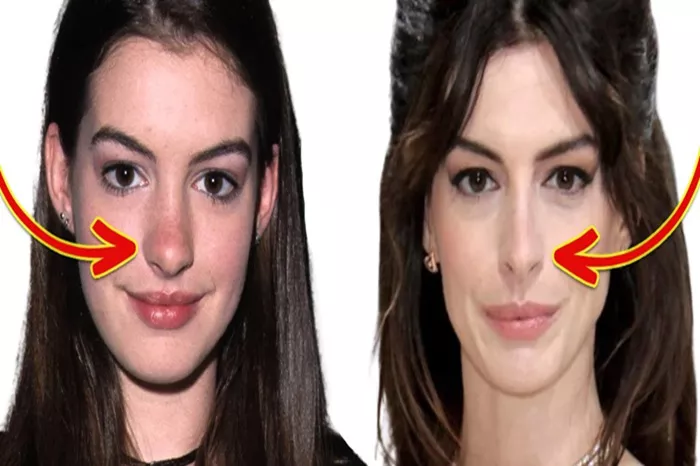Nose jobs, also known as rhinoplasty, are among the most common cosmetic surgeries worldwide. People opt for nose jobs for various reasons, including improving their appearance, correcting breathing problems, or repairing injuries. While some procedures are subtle and natural-looking, others can be more noticeable. This article will explore the signs that may indicate someone has had a nose job, providing a comprehensive guide to understanding the subtle and overt changes that rhinoplasty can bring.
Common Signs of a Nose Job
1. Symmetry and Proportion
One of the most noticeable signs of a nose job is improved symmetry and proportion. Natural noses often have slight asymmetries and imperfections. After a rhinoplasty, the nose may appear more balanced and harmonious with the rest of the face. This enhanced symmetry can be a clue that cosmetic surgery has been performed.
2. Changes in Nasal Bridge
The nasal bridge is a common focus in rhinoplasty procedures. Surgeons may smooth out bumps, straighten a crooked bridge, or reduce its size. A nose that previously had a prominent bump or was notably crooked might appear straight and smooth post-surgery. This transformation is often a clear indicator of a nose job.
3. Altered Nasal Tip
The tip of the nose is another area that frequently undergoes changes in rhinoplasty. A bulbous, droopy, or overly large nasal tip can be refined to look more defined and proportionate. If the tip of someone’s nose appears more sculpted or lifted than before, it might suggest they have had a nose job.
4. Scarring and Incision Marks
Though rhinoplasty techniques have advanced to minimize scarring, it can still be present, especially with open rhinoplasty procedures. Small, barely visible scars may be located at the base of the nose or inside the nostrils. These scars are often subtle but can be a telltale sign of surgical intervention.
Behavioral and Psychological Indicators
1. Sudden Boost in Confidence
A noticeable increase in someone’s confidence, particularly about their facial appearance, can indicate they’ve had a nose job. Cosmetic surgery can significantly enhance self-esteem, leading to more outgoing behavior and a greater willingness to be photographed.
2. Avoidance of Close-Up Photos
On the flip side, some individuals may be more cautious about close-up photos immediately after surgery, during the healing phase. They might avoid situations where their nose could be closely scrutinized until they feel fully recovered and confident in their new look.
3. Changes in Makeup Application
Changes in makeup application techniques can also hint at a nose job. Post-surgery, individuals might use makeup differently to highlight or downplay specific aspects of their new nose shape. For example, they might use contouring to accentuate the new nasal bridge or tip.
See also: 5 Things You Should Know Before Getting A Nose Job
Medical and Physical Evidence
1. Post-Surgery Swelling and Bruising
In the weeks following a rhinoplasty, swelling and bruising around the nose and eyes are common. Even after the initial healing phase, subtle swelling can persist for several months. Observing someone with unexplained facial swelling or bruising could suggest recent nose surgery.
2. Breathing and Voice Changes
Rhinoplasty can sometimes affect nasal breathing and even the sound of someone’s voice. If a person suddenly breathes more easily through their nose or their voice has a slightly different nasal quality, it might be due to surgical alterations.
3. Follow-Up Visits to the Surgeon
Regular follow-up visits to a plastic surgeon can be a sign of recent cosmetic surgery. If someone frequently visits a surgeon’s office, it could be for post-operative check-ups, indicating they’ve recently had a procedure like a nose job.
Social and Lifestyle Clues
1. Extended Periods of Seclusion
People who have undergone rhinoplasty might take some time off work or social activities to recover. If someone takes an extended break and returns with noticeable facial changes, it could indicate they’ve had a nose job.
2. Sudden Interest in Cosmetic Surgery Topics
A sudden interest in discussing cosmetic surgery, asking for recommendations, or sharing information about rhinoplasty can suggest personal experience with the procedure. They might also start following plastic surgeons or cosmetic surgery pages on social media.
3. Increased Discretion About Personal Photos
Individuals who have had a nose job might be more selective about which photos of themselves they share, particularly during the recovery phase. They might prefer to control their image and how their new look is revealed to the public.
Case Studies and Examples
1. Celebrity Transformations
Many celebrities have undergone rhinoplasty, often becoming subjects of public speculation and analysis. By examining before-and-after photos of well-known figures, one can identify common changes and signs of a nose job, such as altered nasal tips, smoother bridges, and refined nostrils.
2. Personal Testimonials
Hearing from individuals who have had rhinoplasty can provide insights into the subtle and overt changes they experienced. Personal stories often highlight the physical transformations and psychological benefits, such as increased confidence and satisfaction with their appearance.
Conclusion
Identifying whether someone has had a nose job involves observing various physical, behavioral, and social cues. Improved symmetry, changes in the nasal bridge and tip, and the presence of scars are key physical indicators. Behavioral changes, such as increased confidence or altered makeup techniques, can also suggest rhinoplasty. Additionally, social clues like extended seclusion or a sudden interest in cosmetic surgery topics can provide further evidence. By understanding these signs, one can better recognize the subtle and not-so-subtle changes that rhinoplasty can bring.
Related topics:
How Much Does A Nose Job Cost In UAE?
How Long For Bruising To Heal After Rhinoplasty?
Top 10 Foods To Eat After Rhinoplasty

